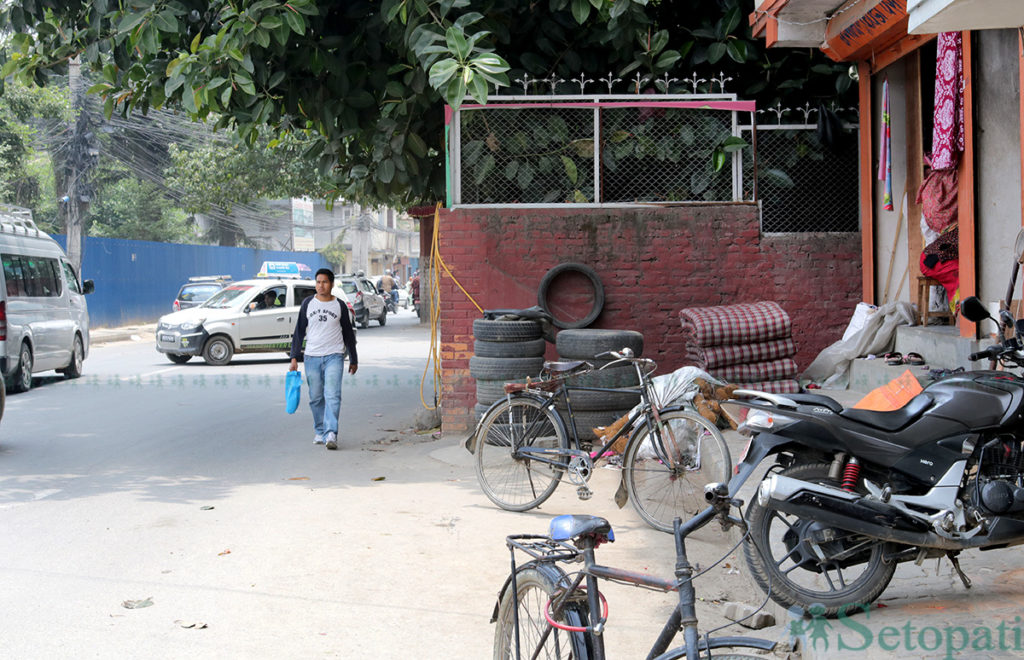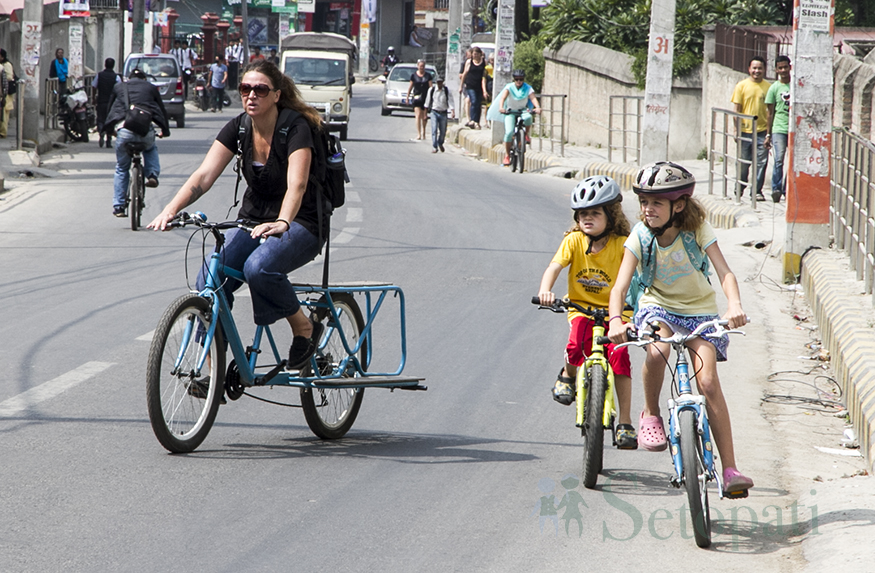True democracy is there where a cyclist and a car rider are treated equally said Enrique Penalosa, the then mayor of Colombian capital city Bogota. He had a leading role in reforming the city’s transportation system while in office during his first term from 1998-2001.
He was re-elected to the post in 2015 for the 2016-2019 term. During the 90s, life in Bogota was messy due to rapid urbanization like that in the Kathmandu Valley at present. Traffic gridlock was the city's identity. But the promotion of cycling changed the face of the entire city, thus changing the people's lives.
The credit for launching the cycle movement in Bogota and its success goes to Penasola. The bicycle is now the symbol of pride, prestige, and civilization of the Bogota City.
Niranjan Dahit who lives in Gokarna, Kathmandu is yet to feel true democracy going by Penasola's definition. Dahit, 24, originally from Bardiya, a tarai district in Province 5, used to ride a bicycle that he purchased at Rs 3,000 until a year ago.
 His years of experience as a cyclist on the Valley’s busy roads show that these roads are not cycle-friendly. Cyclists are never viewed and treated on par with car drivers. Cycling has been fun for him since childhood. He has good memories of cycling in his hometown where relatively peaceful roads sans traffic congestion were suitable for riding a cycle.
His years of experience as a cyclist on the Valley’s busy roads show that these roads are not cycle-friendly. Cyclists are never viewed and treated on par with car drivers. Cycling has been fun for him since childhood. He has good memories of cycling in his hometown where relatively peaceful roads sans traffic congestion were suitable for riding a cycle.
But contrary to that, it is annoying here. He cycled to his college at Exhibition Road and pedaled along the market areas and the outskirts of city. It is challenging to travel on a bicycle on the crowded and dusty Valley roads with poor infrastructure on the one hand, and the cyclists in the country’s capital have to tolerate the rudeness of drivers of motor vehicles on the other.
He continued his bicycle journey for two years despite adversities but eventually gave up after he narrowly escaped death twice while trying to keep himself safe from overtaking by a bus. He has been using a motorcycle for a year, and he realizes that the perception of commuters and drivers toward him has changed now. Motorcycle is not his choice, he claims, but compulsion.
However, Jeevan Shakya from Sundhara has an opposite story to share. College teacher Shakya, who has a long experience as a motorcyclist, is now spotted on a cycle from his home to the workplace. The cycle has been an indispensable part of his life. He also goes on bicycle tours. He gets words of encouragement from his students for his decision to travel in a cycle. But cycle riders are treated as ‘others’ in star hotels.
The guest in a car is greeted with a salute and offered warm hospitality, but cyclists face unfriendly reception and are immediately asked to place the cycle at a corner of the hotel ground. Roads, shopping malls, colleges, and offices in the Valley have no separate parking-lot for cycles, and parking cycles there is not safe.

Only a few places here such as the Kumari Hall, Durbar Marg and Pulchowk-based Bhatbhateni Supermarket are safe for cycle parking. So is it not possible to make Kathmandu a cycle city? Bhusan Tuladhar sees it possible.
Tuladhar is committed to making the town a cycle city. It is his dream. He has decided to limit his cycle journey until the completion of ongoing road widening works here considering the possible negative impact on his health due to dust pollution. The advocator of systematic urban development with promotion of cycling culture says, Valley’s atmosphere is cycle-friendly.
Its maximum temperature in summer does not surpass 30-35 degrees Celsius. It witnesses rain no more than four months. Winter season is also not too cold. Valuable health benefits from cycling cannot be ignored. It is very useful for physical fitness. It helps to keep both the body and mind fit and fine.
Cycles are also eco-friendly as well as affordable on top of that. But Valley roads are not appropriate for cycling. The concept of a cycle lane is rarely included in the road construction projects.
Roads where large vehicles are given space for movement do not have a small area (1.2 meter in width) for cycles to pass. A large four-wheeler needs at least 3.50 meters in width for passing. Motor vehicles have seized the streets. Policy-level flaw is blamed for Valley roads being apathetic to cyclists.
The Department of Roads is mainly responsible for not providing a separate lane for cycles. Most of the engineers with the department are highway designers, but a bicycle path is not included in the highway design projects. Lack of a separate lane for cycling has made cycling unsafe, according to Tuladhar.
Air pollution is another challenge. Valley’s air quality index is alarming. Presence of particulate matter in air is increasing. Quantity of 40-milligram PM 2.5 (particulate matter) per cubic meter is considerable. But recent measurements have put this figure above 54 in the Bhainsepati area and above 71 in the Shankhapark area.
Air quality index in the Valley is scaling up to a danger line, according to the Department of Environment. Cyclists are more vulnerable to negative health impact of air pollution than drivers of other motor vehicles.
"Construction of cycle lanes and improving air quality are preconditions to building a cycle city as followed in Bogota where cycle lanes were added to the roads by rebuilding them through a new design, and promotion of cycling culture itself contributes to improve air quality as well," Tuladhar added.
Cycling culture has flourished in recent years in Europe. Around 40 per cent of people in Denmark ride cycles, and the number is higher in the Netherlands. The photo of the prime minister there riding a bicycle to call on the king made headlines in the international media.
It does not mean that the luxury motor vehicles are not affordable for the Europeans; it means that they are well aware of larger benefits of cycling and bringing it into practice.


